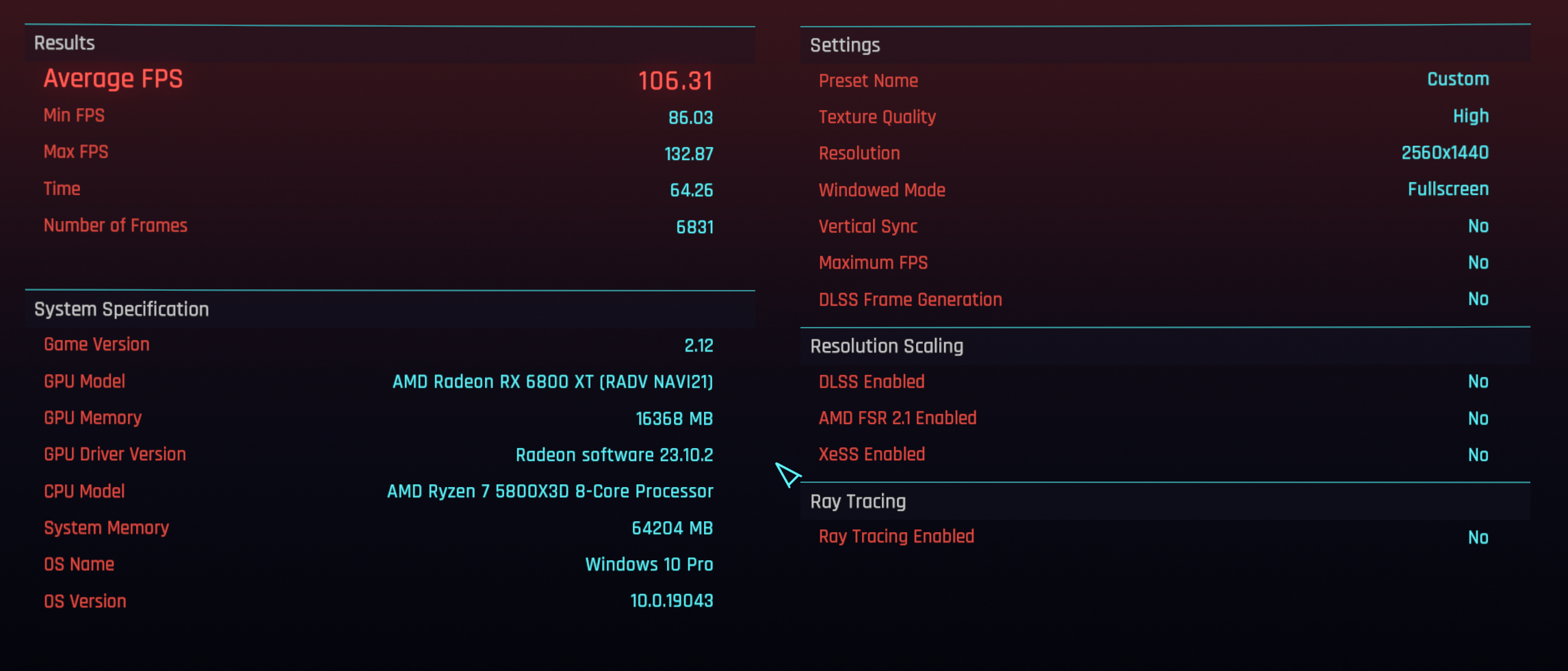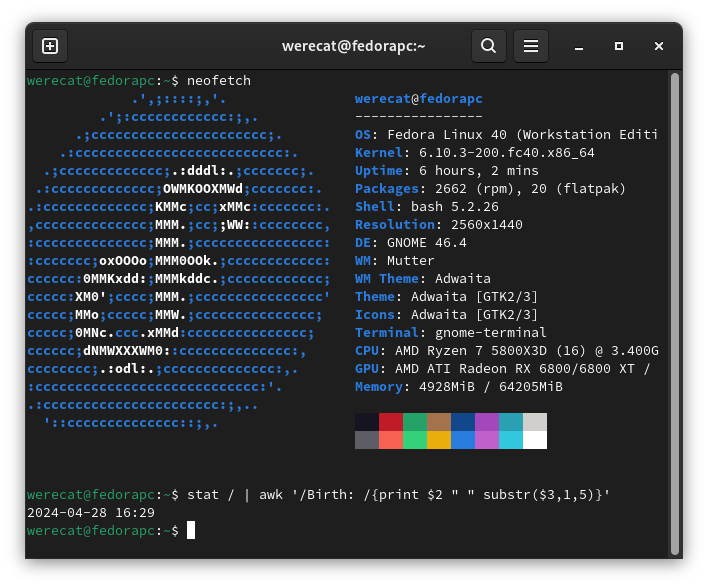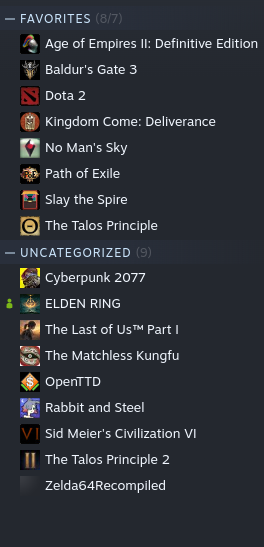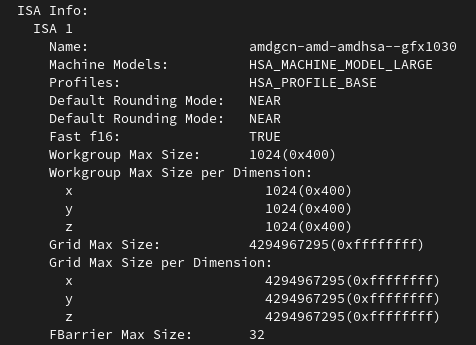All I understand is that your wife is 35 feet and you're 30 meter
WereCat
If only it was so easy
Thanks!
1.) will definitely give it a try 3.) I have set the amdgpu feature mask otherwise I wouldn't even have access to the power limit, voltages, etc... but VRAM overclocking just does not work. Everything else seems to work fine.
I'm 100% sure it's not a cable issue for many different valid reasons one of the main ones being that the cable is able to drive higher res monitor at higher refresh rate without issue.
Also if I just swap cables from my main monitor with the 2nd the same issue still happens with the 2nd monitor but only in Linux, never Windows.
No problem! I was interested in the performance so may as well share my findings :)
Also important to note. On Windows the game runs Lumen all the time on DX12 and only way to disable it is to run the game on DX11. I'm assuming on Vulkan via Proton the game does not run Lumen at all. And also the game seems to support Frame Generation but I haven't tried it yet.
Please bear in mind that custom tuning isn't a guarantee between different driver versions; the voltage floor can shift with power management firmware changes delivered driver packages (this doesn't overwrite the board VBIOS, it's loaded in at OS runtime (pmfw is also included in linux-firmware)). I'd recommend testing with vulkan memory test with each Adrenalin update, and every now and then on Fedora too.
I'm aware. For now it seems to behave consistently. I observed higher avg clocks on Linux vs Windows with the same OC but then again it may be due to difference in monitoring SW or just polling rate.
To be fair when it's time to upgrade the Linux support will be probably even worse since I would be upgrading to even newer stuff than what I have now.
I would hold on the conclusion for now. Steve from HW Unboxed tested both Zen 4 and Zen 5 with the "supposed" fix and both had improved performance so the rough difference between Zen 4 and Zen 5 remained almost the same as the issue was affecting both. We will need to see more tests though to draw a reasonable conclusion. We don't yet know if this also affects older Zen 3 at all or not.
The monitors being flipped happened as well. I fixed that by flipping the DP cable order on the graphics card.
1.) IDK, this issue tends to manifest for me with different distros as well sometimes. Forgot to mention that it also happens if monitors go to sleep when inactive and on wake up the 2nd screen sometimes does not wake. That's why I disabled sleep for monitors.
2.) So far works fine after disabling HW acceleration
4.) no need to waste both of ours time. The script now works fine but thanks for offer. I don't even know what half of your sentence means :D
3.) On Windows I use MPT to further modify the cards behaviour like SOC voltages, clock, FCLK clock, TDC limits and power limits, etc... Basically I can easily squeeze 10% on top of the typical overclocking available via MSI Afterburner or AMD Adrenaline SW. #73rd place in TimeSpy for GPU score which is kinda ridiculous for air cooled card
Cyberpunk likes to draw a lot of current so my tweaks help alleviate the throttling caused by it in typical OC scenarios as the card hits current limit in the CP2077 benchmark more often than it hits the actual power limit. That's why the lows on Linux are worse, it's not related to CPU underperforming. I'd suspect that the lows would be actually better if I could uncap GPU TDC current limit on Linux. Averages would be likely still lower vs Windows due to lack of VRAM OC.
This is not really comparable and I would have to do proper test on both Windows and Linux with the same versions of the game but I've tested with the same settings which are FOV = 100, SSR = Low (because it performs like crap on higher settings for no visual benefit), everything else maxed out.
This is screenshot from the run I did in February with my Windows OC... (also had worse CPU and memory tune back then vs what I run now so results would be slightly better now as well).

And this is from right now on Fedora 40... not sure why CP detects it as Windows 10

Would be interesting to keep the same game versions and GPU,CPU,DRAM tune and do a direct comparison but I can't really be bothered right now to mess with that. What's important to me that it's roughly in the same ballpark and there are no massive swings in performance so unless I keep a close eye on monitoring I can hardly tell a difference when playing.










You dense... You're not very bright, are you?